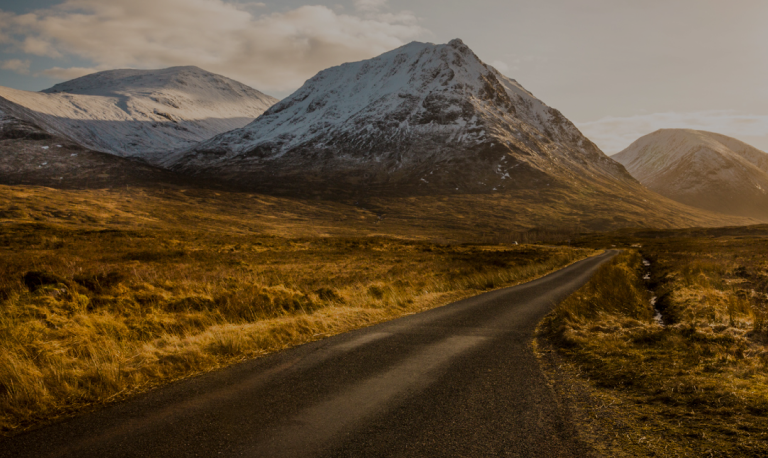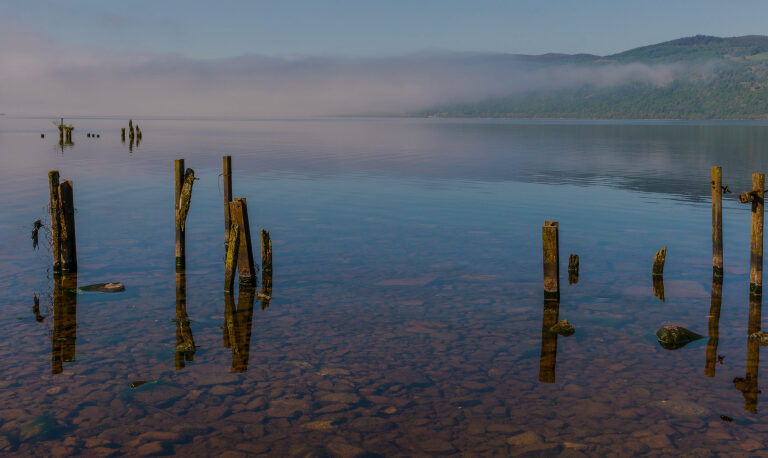A Day in Stirling: The Historic Heart of Scotland
Defining moments from Scottish history surround the city of Stirling. From the Wars of Independence to The Jacobite Risings, the path of this nation has been decided on these lands. I went to the ‘Heart of Scotland’ to take a glimpse into the past.
Stirling Castle sits atop an intrusive crag which can be seen from miles around, a perfect position to build a fortification indeed. With the Ochil Hills to the north, and the River Forth running west to east, Stirling Castle was in prime position to dominate travel to and from The Highlands.
It was said that whoever controlled Stirling, controlled Scotland.
Stirling Castle
The Castle has impressive fortifications built to withstand lengthy sieges, but there are also elements of comfort that are not common in Scotland’s key castles.
Most of the castle dates back to the 16th century, and the grandest section is The Great Hall, built between 1501 and 1504 by James IV. This is the largest hall ever built in Scotland and is coloured today in distinctive ‘King’s Gold’ – as it would have been in the 1500s.
One of the most spectacular events seen in the Great Hall was a banquet in which an 18 foot long wooden ship was transported into the hall. Seafood was served from the decks and brass cannons were fired to salute the Prince.
The Royal Palace at Stirling was constructed in the 1540’s by James V, and was to be his home with his wife, Mary de Guise, the mother of Mary Queen of Scots. To the south of the palace you look onto the castles’ outer defences and the beautiful Queen Anne gardens, where a 200 year beech tree stands proud.
I would highly recommend visiting the castle exhibition beneath the defences, which explore the full story of the castle and even features 16th century graffiti! I was taken aback by the homely and comforting feel of Stirling castle, which is not a feeling I’ve had for the other great Scottish castles.
Top tip: Keep your Castle ticket! You can visit Scotland’s finest 17th century townhouse, Argyll’s Lodging, outside the castle for free.
View this post on Instagram
The National Wallace Monument
My next stop was the Wallace Monument – a national landmark where you can discover the life and legacy of Sir William Wallace. The Monument is an impressive feature on the skyline, was completed in 1869 and stands tall at 220 ft.
There are three main sections to the monument and a viewing platform at the top, with views worthy of the 246 step climb to the top! The Hall of Arms displays how The Battle of Stirling Bridge was fought and won by Wallace, and the third floor provides details on the construction of the monument.
I found the second floor most interesting, The Hall of Heroes tells the story of how Wallace has been acclaimed as Scotland’s first National Hero. Your eye will be especially drawn to a sword hanging in the centre of the room, which is rumoured to be Wallace’s Sword. It is some size and must have struck fear into the hearts of those who faced it! Surrounding the sword are busts of well-known Scottish heroes from Robert The Bruce to Rabbie Burns – all of whom have a special place in Scotland’s history.
View this post on Instagram
The Battle of Bannockburn Experience
Ever wanted to immerse yourself in a 14th-century battle?
The Battle of Bannockburn Experience is a remarkable 3D audiovisual auditorium, putting you right at the centre of the action, with the story of the battle unfolding around.
A famous scene from history is replayed before you enter the battle, King Robert the Bruce cleaving the English knight Henry de Bohun. Despite the advanced weaponry of de Bohun, he was defeated by the superior tactics of Bruce, and this moment is symbolic of the larger battle that was fought.
The Battle Room allows the visitor to understand the tactics of both armies in the battle, the reasons for victory and even the chance to change history if you wish! The centre is positioned on the original site of the Scottish army camp, and the magnificent statue of Robert the Bruce is situated close by.
The memories of the past surround the city of Stirling and are woven into its very fabric – ready for you to explore.
View this post on Instagram
Jason Martin
P.S. If you’d like to explore Stirling’s fascinating history for yourself, why not book one of our Self-Drive Tours of Scotland? The city makes a perfect sightseeing stop between Edinburgh and the Scottish Highlands.


